Stonefish Red Sea The Disguised Killer Believe It Or Not Full guide
Understanding the Captivating Yet Deadly Red Sea Stonefish
Table of contents
- Understanding the Red Sea Stonefish
- Unique Adaptation Mechanisms of the Red Sea Stonefish: Surviving Against All Odds
- The Enigmatic Life Cycle of the Red Sea Stonefish: A Detailed Overview
- Understanding the Dangers of the Red Sea Stonefish: Deadly yet Captivating
- The Red Sea Stonefish and its Role in Marine Ecology: A Closer Look
- The Top 10 Most Dangerous Fish in the Red Sea
- Other Dangerous Fish and Animals In Red SEA
- FAQs About Red Sea Stonefish
- Red Sea Stonefish In conclusion
- Red Sea Stonefish Related links
Dive into the crux of the Red Sea Stonefish’s world. From its unique life cycle to the dangers it poses, this article offers a Comprehensive understanding of this marine marvel.
Understanding the Red Sea Stonefish
Have you ever Stumbled upon an unusual creature lurking behind the reefs of the Red Sea? It could be a Red Sea Stonefish. This Peculiar marine animal is distinguished by its unusual Features and survival techniques. But what makes the Red Sea Stonefish truly unique?
Unique Adaptation Mechanisms of the Red Sea Stonefish: Surviving Against All Odds
For Starters, the Red Sea Stonefish is a master of Disguise. Moreover, they have a unique ability to Camouflage themselves, Blending perfectly with their Surroundings. Isn’t it fascinating how nature Empowers its creatures to survive against the odds?
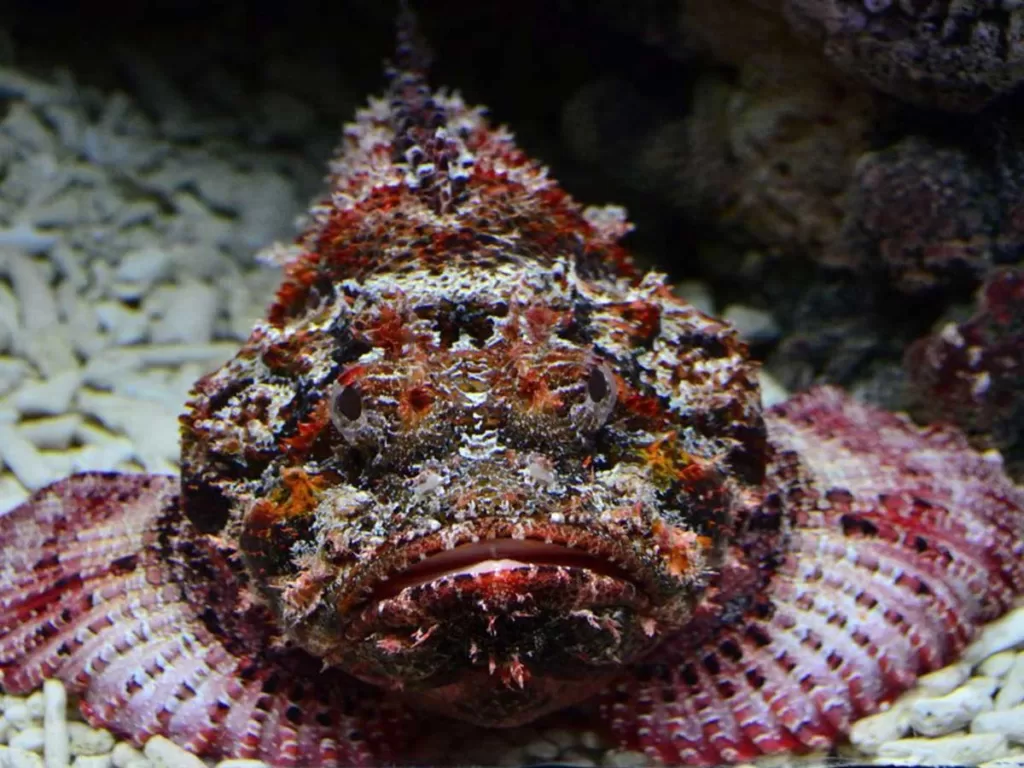
Red Sea Stonefish Predominantly reside in coral reefs and sandy ocean beds. They nestle themselves amongst rocks and sand, making them almost invisible to Predators and merry divers. Their hard, bumpy exterior further enhances their Camouflage, appearing as just another rock Formation.
The Enigmatic Life Cycle of the Red Sea Stonefish: A Detailed Overview
The Red Sea Stonefish Exhibits a fascinating life cycle. Females lay numerous buoyant eggs, directed by males, attached to corals, rocks, or vegetation along water currents.
Over Approximately one week, these eggs develop into larvae and subsequently the grown fish. Remarkable Evolutionary adaptation, isn’t it?
Understanding the Dangers of the Red Sea Stonefish: Deadly yet Captivating
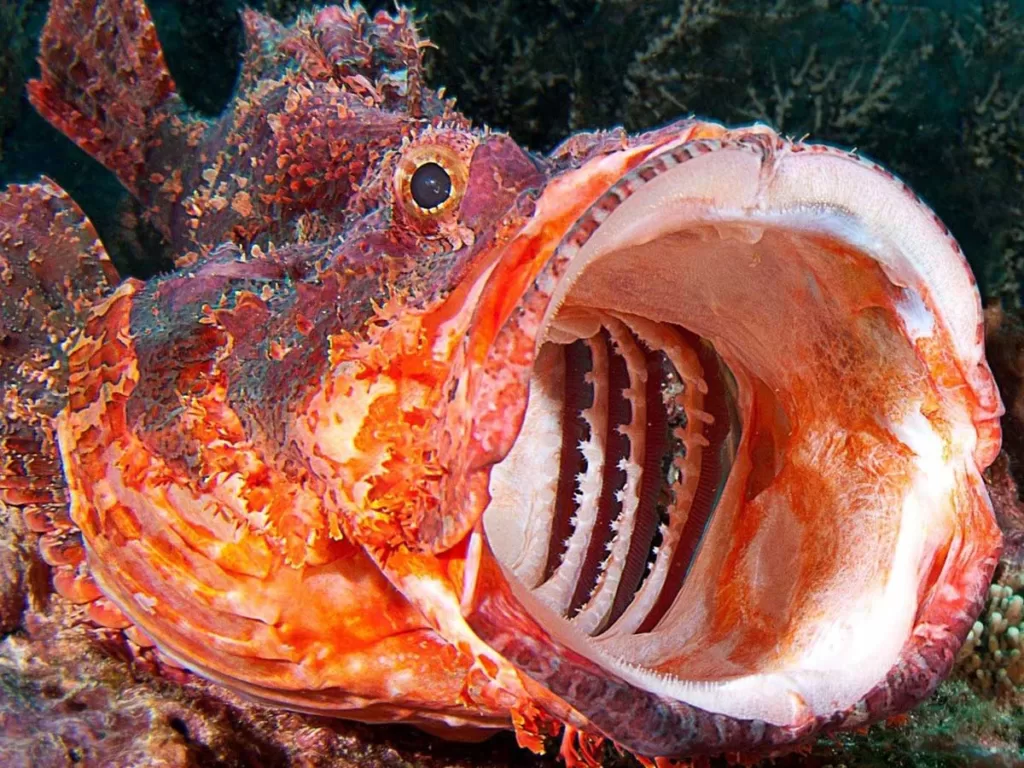
Yet, it’s not all beauty and Fascination when it comes to these marine Critters. Believe it or not, the Red Sea Stonefish is one of the most Venomous creatures in the ocean. Hence, echoing the saying, ‘beauty is Deceptive.’ Don’t you agree?
Should you Unexpectedly step on one, it will Reflexively raise its needle-like dorsal spines releasing venom. Although rarely fatal to humans, the sting of the Red Sea Stonefish can cause severe pain and possible medical Complications.
The Red Sea Stonefish and its Role in Marine Ecology: A Closer Look
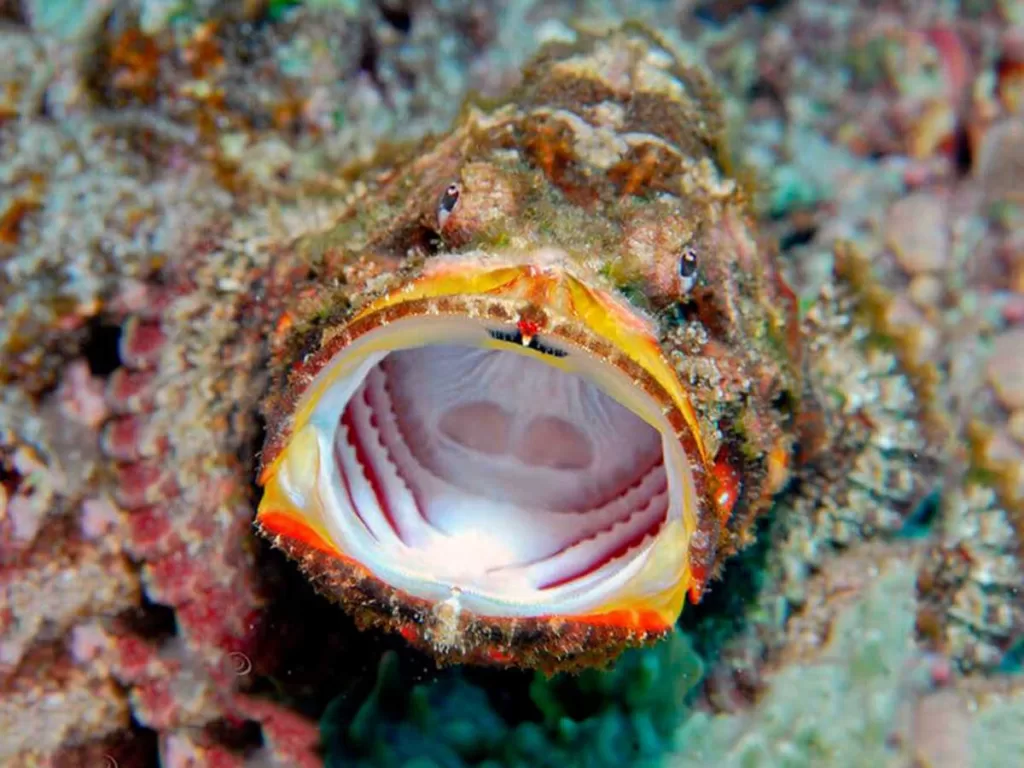
Despite posing potential dangers, the Red Sea Stonefish plays a crucial role in our marine Ecosystem’s health and Sustainability. It maintains the balance by Controlling smaller fish and Crustaceans’ populations, thereby preserving the ecological cycle. So, wouldn’t it be right to say that these creatures embody the real essence of Ecological well-being?
The Top 10 Most Dangerous Fish in the Red Sea
The Red Sea Ecosystem is teeming with Perilous marine life, from tiny cone snails to enormous lionfish. Some of these deadly Occupants include:
1- Stonefish

Stonefish, known for their sharp spines and poison glands, serve as a defense mechanism and are difficult to Distinguish from the Surrounding reef. They are often Indistinguishable from stones, making it crucial to avoid accidental steps and touch the reef. Red Sea Walkman, Inimikus Filamentosus, is an interesting scorpionfish species with colorful pectoral and tail fins. It is poisonous and requires first aid, such as Immersing the affected area in hot water (60°-70°) to Denature the poison’s protein component. Painkillers are also recommended for severe injuries, and Inadequate pain response underwater can pose a risk to divers.
2- Lionfish
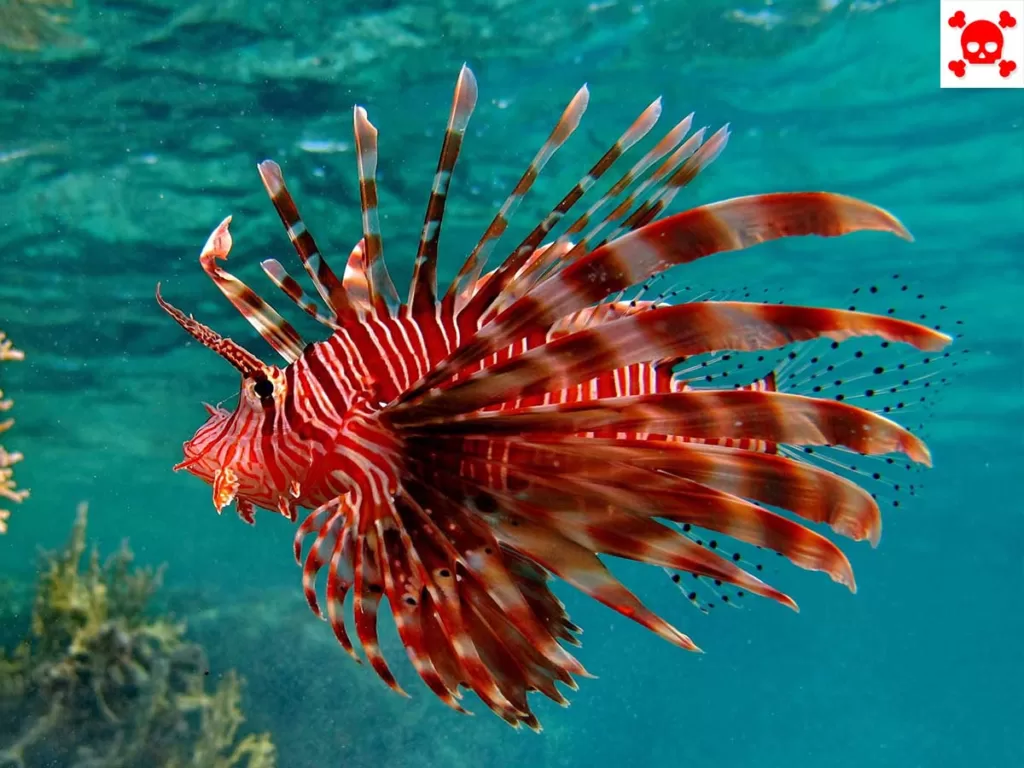
Lionfish, a scorpionfish, have a dorsal fin with poisonous spines and are typically seen sitting side down under cliffs. They hunt for prey, typically small fish and crustaceans, and often inhabit shipwrecks. To treat a poisonous injury, immerse the affected area in hot water and administer painkillers.
3- Barracuda
Barracuda are snake-like creatures with sharp-edged, fang-like teeth set in large jaw sockets. They have pointed heads with underbites and no spines in their gill covers.
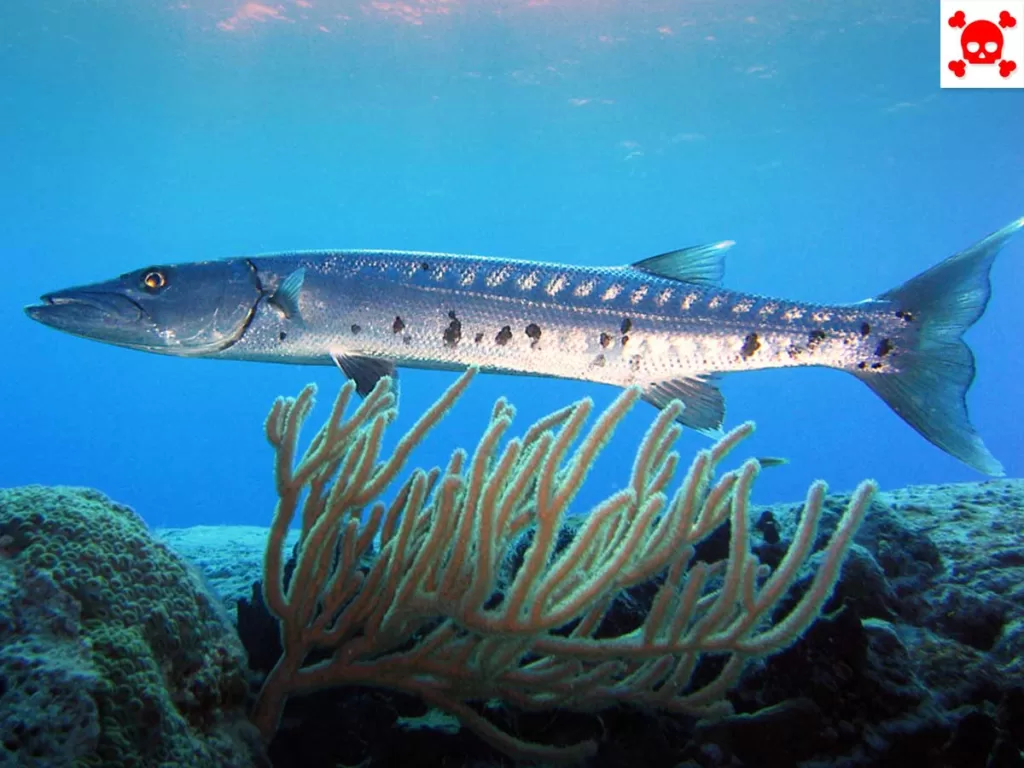
The dorsal fins are separated, with the anterior having five spines and the posterior having one spine and nine soft rays. The lateral line is prominent, and the spinous dorsal fin is placed above the pelvic fins. The caudal fin is moderately forked and set at the end of a stout peduncle.
The pectoral fins are low on the sides. Barracuda have a large swim bladder, allowing for minimal energy expenditure while cruising or remaining idle.
4- Moray eels.
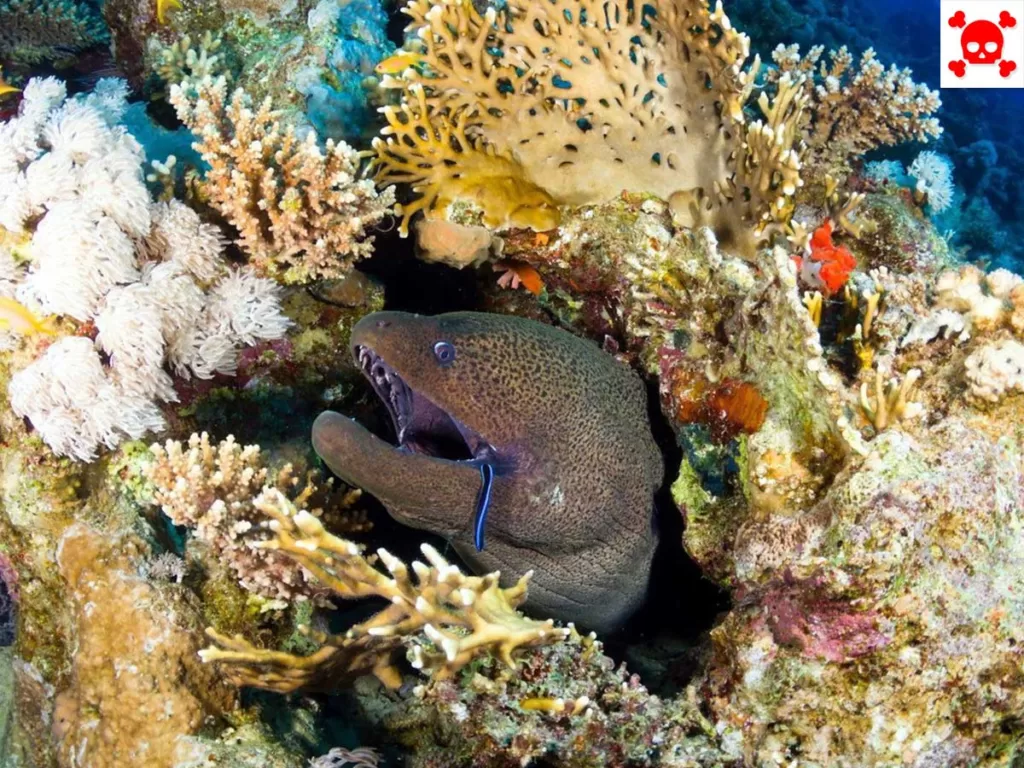
Moray eels, abundant in the Red Sea, have a serpentine body shape with bare skin and mucus covering their entire body. They have connected dorsal and anal fins, growing up to 3 meters in length. Moray eels do not attack humans and do not have poisonous teeth or spines. However, if irritated, they may bite with sharp backward curved teeth. Moray eels hunt smaller fish at night, and can be seen during the day, especially in reef holes.
5- Sharks
Ten Red Sea species pose significant danger to humans, with mako, tiger, and oceanic whitetip being the most dangerous.
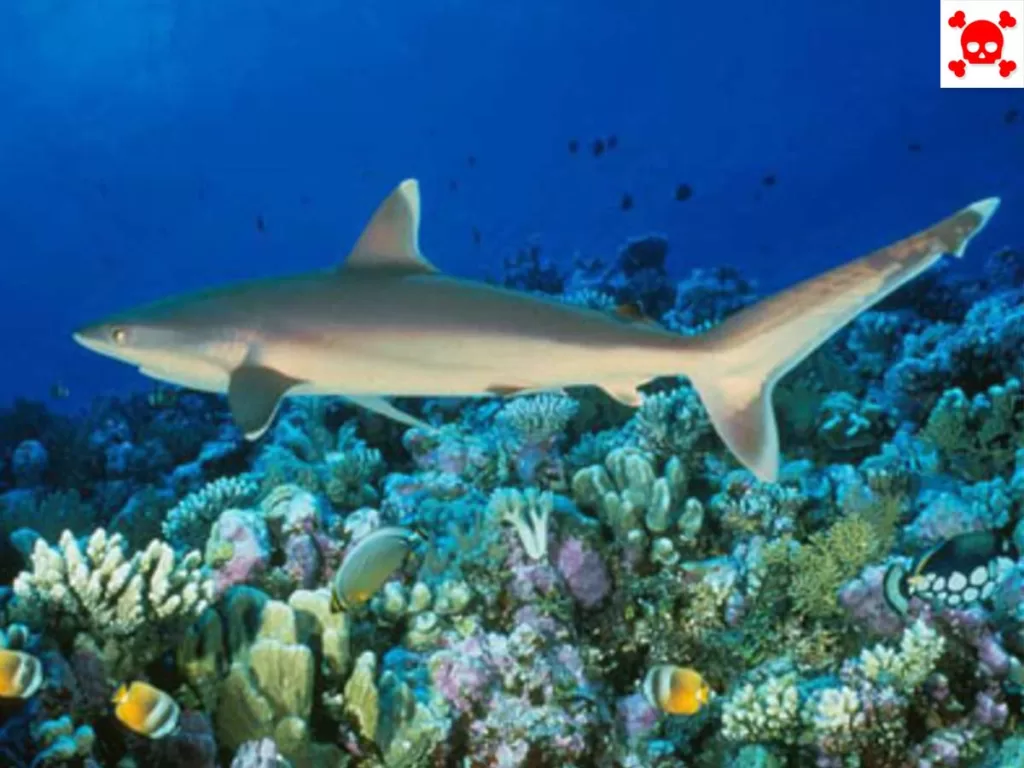
Sharks are fish found in open sea reefs, often seen near safari boats. They can hunt turtles and sick dolphins, but are generally shy. Shark attacks are rare in the Egyptian Red Sea, and no reports of scuba divers being attacked near Hurghada. Snorkeling with sharks is not recommended.
6- Trigger Fish
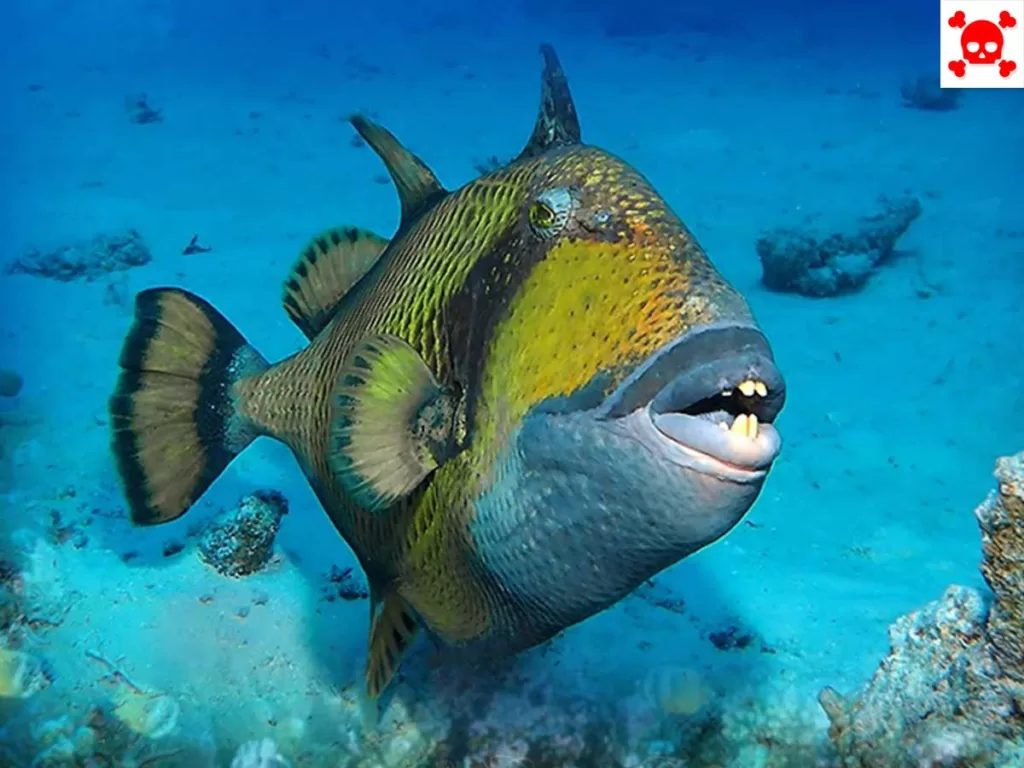
The titan triggerfish, the most aggressive fish in the Red Sea, is particularly aggressive during the breeding season from July to September. They have funnel-shaped nests in sandy bottoms and defend the water column above it. To enter their territory, flee horizontally and protect yourself with fins. They can grow up to 75 cm in size.
7- Sea Urchins
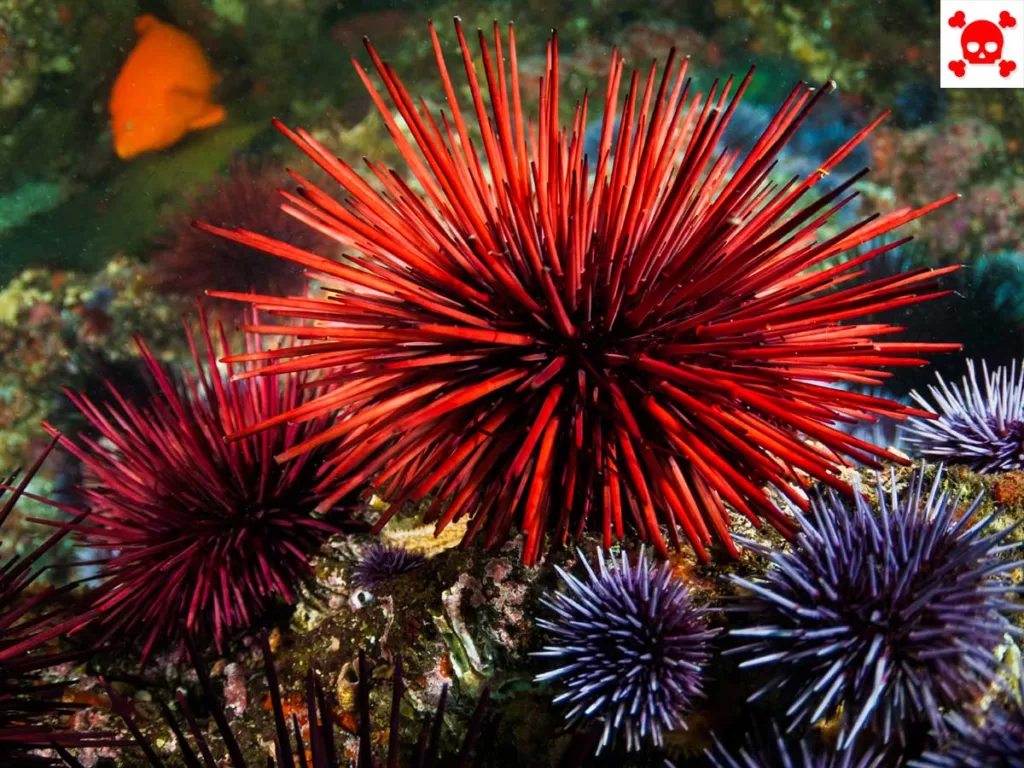
Sea urchins can cause serious injuries, particularly when entering water. The most common injury is the pricking of a black sea urchin’s spines into a bare foot, which is painful due to their fragile spines. It takes about three days for the pain to subside and the body to absorb the remaining spines. First aid involves immersion in hot water, then removing the visible spines with tweezers, being cautious as they are fragile. Doctors recommend using antiseptic solutions or ointments for additional protection.
8- Cone Shells
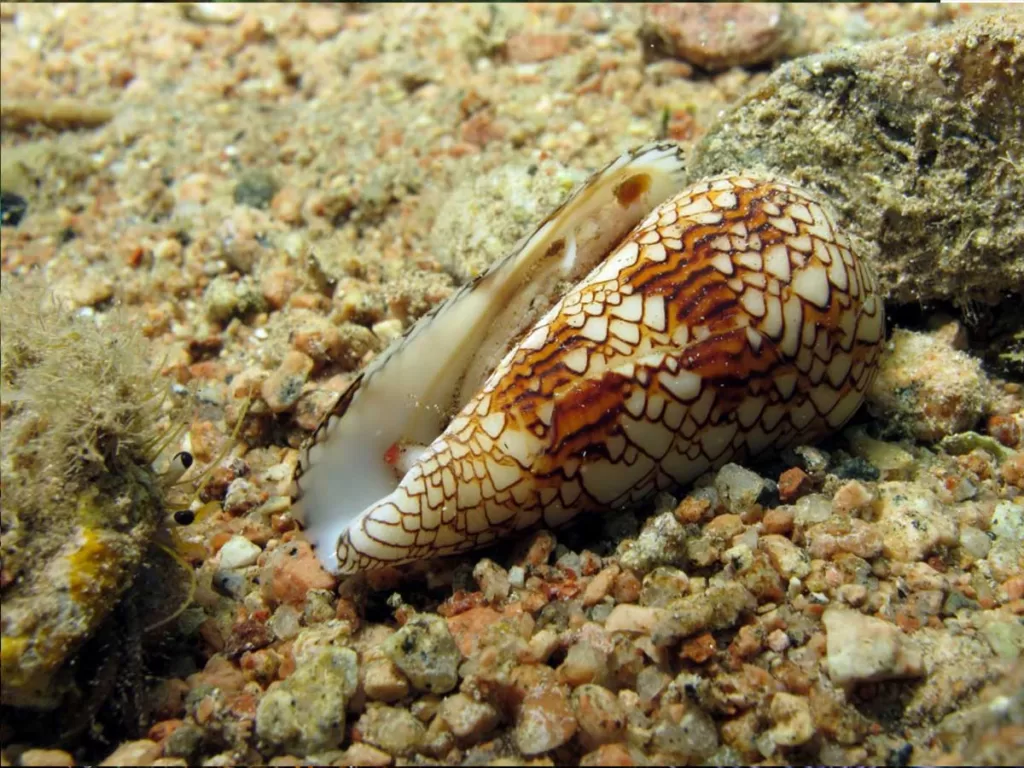
Cone shells, a snail living in a conical shell, pose a significant danger to fish. They often lie buried in sand and sniff out an undulating siphon, which fish can mistake for a worm. To keep the fish away, the snail hits it with its poisonous barb, connected by a long thread. Some cone shells’ venom contains conotoxin, a nerve poison that accelerates heart activity, causing a quick and fatal effect. Avoid collecting shells from marine animals.
9- Blue Spotted Stingray and other rays
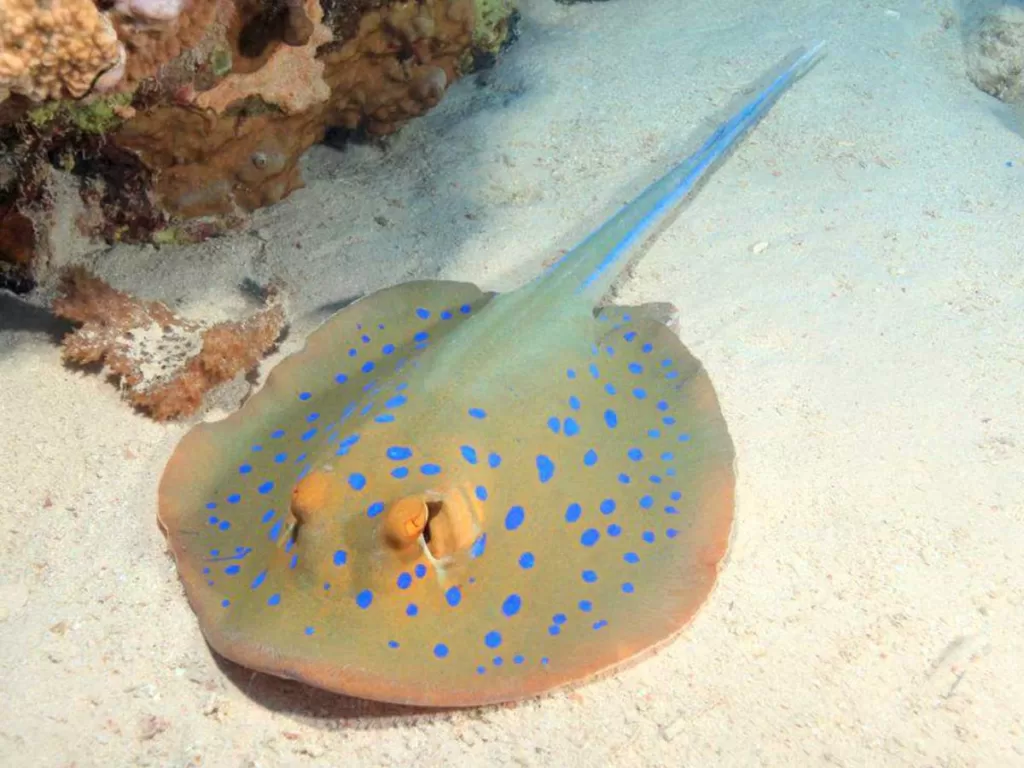
Stingrays, a fish-like species, have cartilage instead of bones, providing flexibility. In the Red Sea, the blue-spotted stingray has poisonous spines on its tail for defense. It feeds on crustaceans and fish, while larger species like feathertail stingray command respect due to their massive tail. Leopard stingrays and torpedo pantheras use electric shock to stun prey.
10- Puffer Fish

Puffer, porcupine, and sole fish produce toxins for defense, posing risk of poisoning during unprofessional food preparation.
Other Dangerous Fish and Animals In Red SEA
Hot water immersion is recommended for relief, while cortisone ointment can be used for skin irritation, but a doctor visit is necessary.
Each one packs a sting that can trigger episodes of intense pain, paralysis, and in severe cases, fatal outcomes. Ever wondered about the deadliest fish in the Red Sea?
Stonefish: The Red Sea’s Most Poisonous Resident
Lying hidden amongst rocks and coral, the Stonefish reigns supreme as the Red Sea’s most venomous resident. The perfect camouflage coupled with highly toxic spines on their back makes it a lethal creature. A sting from this critter could lead to heart failure if left untreated. Isn’t that fascinating yet terrifying?
FAQs About Red Sea Stonefish
Dive into this engaging FAQ about the Red Sea Stonefish, one of the world’s most venomous fish. Discover what makes them unique and learn important facts about their lifestyle and habitat.
In explorations around the coral-fringed edges of the Red Sea, a humbling assortment of marine life awaits. Today, our attention turns to a fascinating yet frightful creature that dwells in these waters: the Red Sea Stonefish. As intriguing as it is intimidating, let us delve into some commonly asked questions about this marine wonder.
What should I do if I’m stung by a Stonefish?
Injured by a Stonefish, immediate action is crucial as it is a venomous ocean creature that can cause severe pain and complications if not treated promptly.
First and foremost, it is essential to seek medical attention as soon as possible. Contact emergency services or visit the nearest hospital immediately. Time is of the essence when dealing with a Stonefish sting.
While waiting for medical help, there are a few steps you can take to alleviate some of the pain and minimize further damage. It is important to remain calm and try not to panic. Elevate the affected limb if possible to slow down the spread of venom throughout your body.
To neutralize any remaining venom on the wound, immerse it in hot water without scalding yourself. The water should be at a temperature that your skin can tolerate comfortably. Soaking in hot water helps alleviate pain by breaking down proteins present in the venom.
Under no circumstances should you attempt self-treatment methods such as cutting or sucking out venom from the wound. These methods can worsen the situation and lead to infection.
Remember, time is critical when dealing with a Stonefish sting. Seeking immediate medical attention is crucial for proper diagnosis, treatment, and management of this potentially dangerous situation.
Red Sea Stonefish: Your Questions Answered
The Stonefish is a master of camouflage, seamlessly blending with underwater rock formations and coral reefs. Its venomous spines pack a potent punch, are it’s one of the most venomous fish globally, piquing the interest of marine biologists and adventure enthusiasts alike.
The Stonefish, named for its rocky appearance, has an irregular exterior resembling stones, making it easily mistaken for an innocuous rock or coral.
Unsurprisingly, these unique marine creatures make their home in the Red Sea, dispersed amongst its vibrant coral gardens and rocky nooks. Careful handling is crucial as their camouflage poses a hidden danger to divers.
Immediately seek medical attention if you are stung. Stonefish venom can cause extreme pain, swelling, and in severe cases, can be potentially fatal. Immerse the affected area in hot water until professional help arrives, as this helps to neutralize the venom.
Yes, all Stonefish species are venomous, not just those from the Red Sea. Their deadly cocktail of toxins remains consistent across species, earning them a place as one of the world’s most venomous fish.
Wrap Up
The Red Sea Stonefish, with its rocky facade and toxic trump card, remains an intriguing dweller of the marine depth. Submerged in the mystery of the sea, they are a testament to nature’s diverse and often surprising tactics for survival.
Red Sea Stonefish In conclusion
the Red Sea Stone fish, with its unique survival mechanisms, presents a world full of wonders and surprises. Its role within the marine ecosystem also highlights its importance to ecological health. Let us ensure that our actions don’t compromise their existence and help sustain biodiversity for generations to come.
So next time you’re diving or snorkeling in the Red Sea, beware of this captivating yet deadly creature. Always remember – looks can be deceiving, right?
Remember, every marine species, no matter how dangerous, plays a vital role in maintaining the balance of the ecology, and it is our responsibility to foster their conservation, always respecting their environment.
